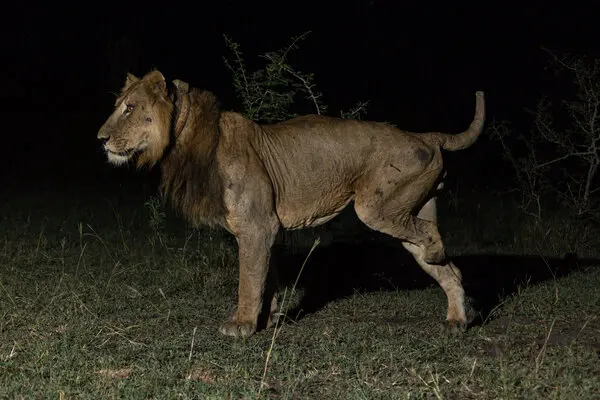By: Yiling Sun
The river was called the Kazinga Channel. Vicious 16-foot crocodiles and hippos inhabited this river. On the one shore two lion brothers, Jacob and Tibu, faced a fierce battle for territory against rival female lions, resulting in their ultimate defeat. To avoid further defeats, they needed to swim across this huge channel. The daunting river spans nearly a mile and can reach an alarming depth of 20 feet in some areas. The chances of the lions crossing safely was slim.
Jacob had a slight disadvantage: he only had three limbs. He lost the fourth one in a poacher’s trap in 2020. Despite this loss, they persevered, determined to swim across the wide river ahead of them.
The drone tracking their location detected a significant thermal signature part way through their crossing, which could have been from a hippo or a massive crocodile. The potential attacker’s sudden appearance forced the two large felines to divide into a Y-shaped formation as they swiftly made their way back to the shore.
When they made their third attempt, less than an hour had passed since the two magnificent lions embarked on their perilous journey. Upon entering the water, the path ahead lay clear before them, prompting them to quickly swim towards the distant shore, alert and aware of potential attacks from prowling creatures. Their powerful strokes propelled them forward through the cool, flowing water, until, at long last, they reached the opposite bank, their weary paws finding relief on the solid ground.
Alexander Braczkowski, a conservation biologist working with Griffith University and Northern Arizona University, has studied these two lions since 2017.
“It was pretty dramatic,” Dr. Braczkowski said about the river crossing. “It looks like two tiny little heat signatures crossing an ocean.”
Many lions have been seen swimming in the Okavango Delta in Botswana, but none have swum further than 150 feet. The furthest that any lion has swum is 0.6 miles. Other big cats are more comfortable in water, but not lions.
Craig Packer, who ran the Serengeti Lion Project for 35 years but wasn’t involved in the study, explained why these lions would make such a dangerous crossing.
“If there’s nobody to mate with, what are you doing?” he said. “You’re a male lion. You don’t have a very long-life span, so you have to get on with it, especially if you’re wounded.”
The local weather conditions also played a role in the success of this swim. As more humans began to arrive in the area, the population of lions in the national park decreased from 71 in 2018 to 40. The male lion population in the area was twice as large as the female population due to the unfortunate practice of nearby residents poisoning many female lions to protect their livestock.
“These males and these swimming events are a symptom of this problem,” Dr. Braczkowski said. “The males are not finding females in the area where they had tenure. The only females they can get to may be across the channel.”
Jacob and Tibu accomplished the incredible feat of setting the record for the longest distance ever swum by a lion, all because they wanted to stay out of danger.











